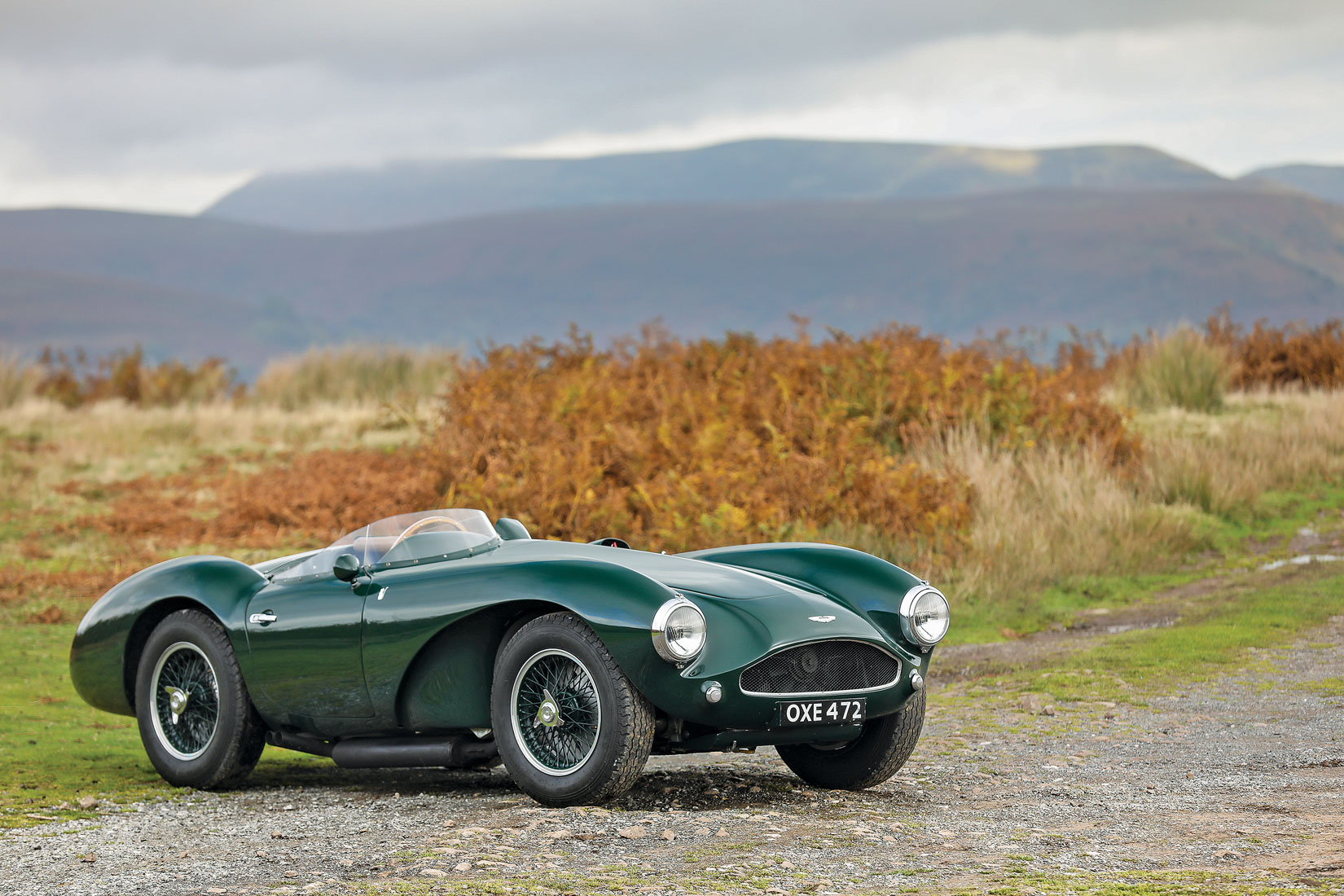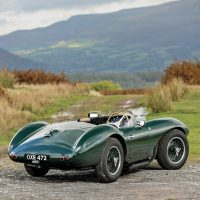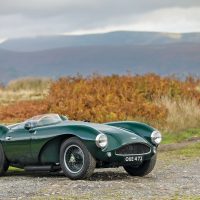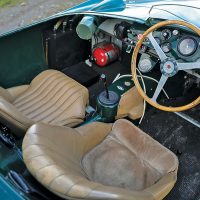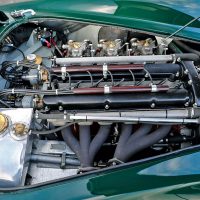SCM Analysis
Detailing
| Vehicle: | 1955 Aston Martin DB3S |
| Years Produced: | 1954–56 |
| Number Produced: | 31 (11 Works cars, 20 customer cars) |
| Tune Up Cost: | $500 |
| Chassis Number Location: | Plate riveted to top of scuttle/driver’s footwell, adjacent to steering column |
| Engine Number Location: | On timing cover |
| Club Info: | Aston Martin Owners Club |
| Website: | http://www.amoc.org |
| Alternatives: | 1951–53 Jaguar C-type, 1953–55 Allard JR, 1955–58 Maserati 300S |
This car, Lot 13, sold for $3,991,746 (£3,011,000), including buyer’s premium, at Gooding & Co.’s “Passion of a Lifetime” sale held near London, England, on September 5, 2020.
The DB3S was conceived by Willie Watson and styled by Frank Feeley as a replacement for the Eberan-Eberhorst-designed DB3. The Works team raced it, as well as privateers, to whom 20 cars like this one were sold. Total production is counted at 31 — plus a single continuation car assembled from original spare parts in 1994, numbered 121. As the catalog had it, this was “a wonderful reminder of the glory days of international sports-car racing — a halcyon period when eager amateurs could find themselves locked in battle with the Works racing teams on the world’s great circuits.”
The only drawback here is that despite their W.O. Bentley-designed twin-cam engines and gorgeous bodywork, these are slightly funny old things with that odd DB2-type trailing-arm front suspension. Though not as heavy and uncompetitive as the DB3 was when new, they’re no D-type Jaguar. Even a C-type is faster and better to drive while costing similar money.
Racing provenance
Chassis 102 is one of three customer cars ordered for the Kangaroo Stable, which raced out of England in 1955, having been formed by a bunch of Aussie racers to campaign sports cars in Europe. Tony Gaze, a decorated World War II Spitfire pilot who had previously raced DB3/9 and persuaded Lord March to use Goodwood aerodrome as a race circuit (a building there is named after him), had tried buying D-types for the Stable in late 1954. When he couldn’t get a firm delivery date, he had a word with Aston’s team manager John Wyer, who promised him a trio of DB3Ss in time for the start of the 1955 race season.
Gaze drove our subject car with Stable co-founder David McKay, while Tom Sulman and Jack Brabham were in chassis 103, and Les Cosh and Dick Cobden in 104. As far as notable finishes go, 2nd place at the 12 Hours of Hyères is not so impressive. The Le Mans disaster of 1955 rather put a damper on sports-car racing in Europe, and the Stable disbanded later in the year. Brabham went on to greater things, of course. Chassis 102 and 103 were exported to Australia (104 went to the U.S.), and in 1957, our subject car set an Australian Land Speed Record but was wrecked in 1960.
In good company
Gooding & Company’s first auction outside the U.S. was a one-off sale to disperse 15 of the cars diligently collected over more than 30 years by Hubert Fabri. Each is significant for its provenance, rarity, originality, or in most cases, all three. This car scores points in each category, but not an overabundance.
Feeley’s swooping sports-car lines are splendid, but 102 is not without stories. Its original 2,922-cc straight 6 was presented on a stand behind it (and included in the deal), as a twin-plug DB3 engine has been substituted. At least some of that body is certainly a replacement. The SCM Platinum Auction Database refers to its sister car 104, registered OXE 474, as the “least crashed” of the Kangaroo Stable cars, so we can imagine all three had a hard life.
Tracking its value is fairly straightforward. With limited sales due to their small numbers, we have only a few points of reference, but we saw customer DB3S prices rise at a fairly steady rate from $1.98m in 2009 to $3.7m in 2012 and $5.5m in 2014. The no-sale at $7.5m last year is an outlier because it’s a Works car (DB3S2) that was later owned by Peter Collins, perceived at the time to have been worth nearer $10m.
Our car doesn’t have anything like that Works provenance, which would more or less double its value. Even so, as a real, documented DB3S, even one that’s been seriously bent and rebuilt, you’d expect it to achieve something near that $5.5m achieved by chassis 111 in 2014, before the market’s last peak.
Estimated at £3m–£4m, bidding stalled at £2.4m ($3.2m). With the high bidder seated in the room, auctioneer Charlie Ross looked for £2.5m on the phone. At the last minute, two new bidders in the room saved the day, upping the stakes to £2.65 and then £2.675m — just shy of $4m, all-in. A more-than-fair price for a car with a rather convoluted history that’s unlikely ever to be an outright winner. ♦
(Introductory description courtesy of Gooding & Company.)
